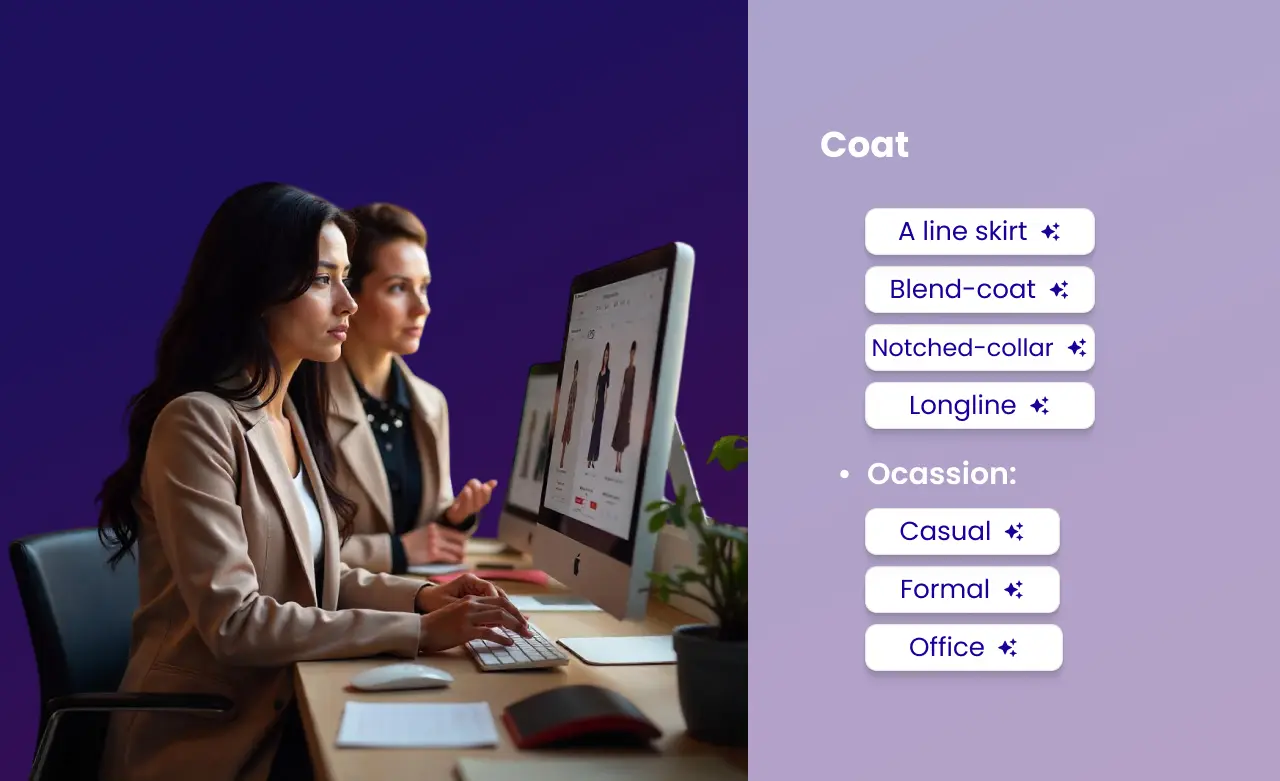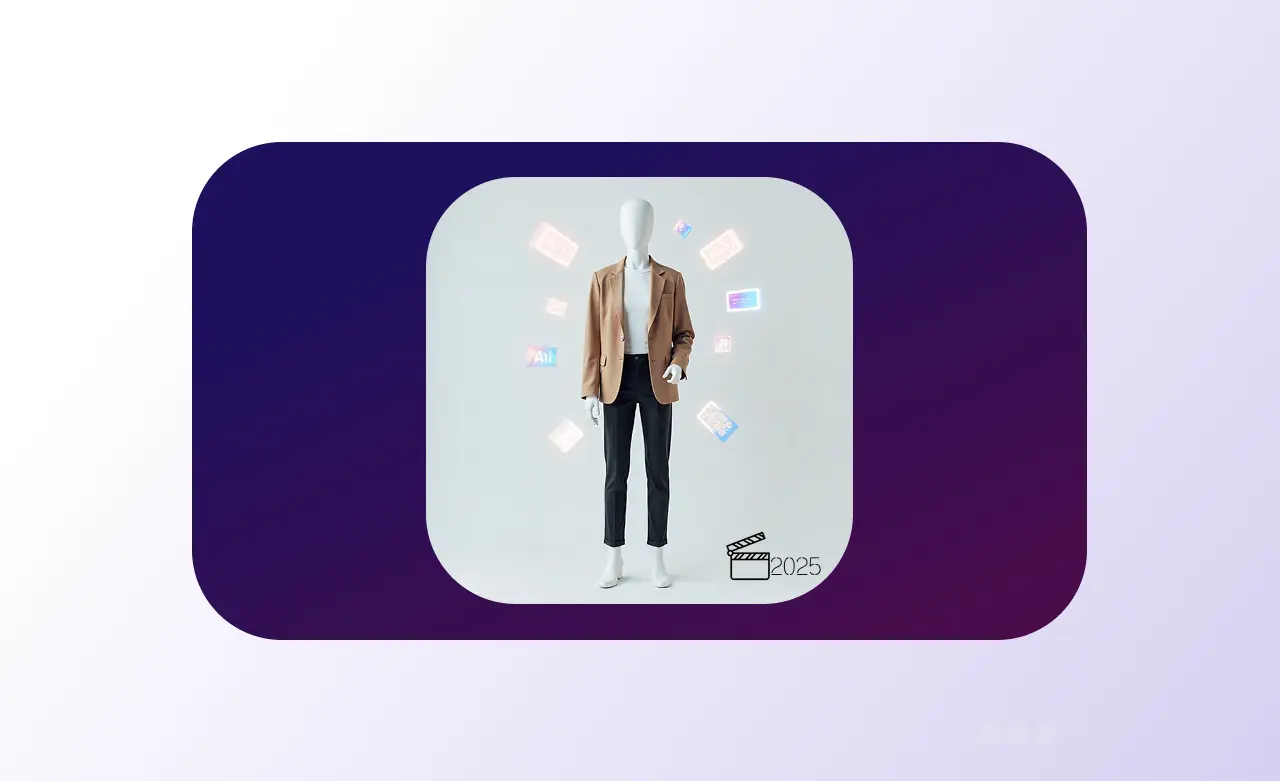Biggest Fashion Marketplace Challenges and How to Solve Them

Businesses in the online marketplace encounter challenges every single day. To make things worse, besides these everyday challenges, there are also bigger threats you will need to face head-on if you want your brand to thrive. These threats can arise from customers, products, and your approach to sales and marketing.
However, if you have a solid strategy in place, including effective e-commerce growth strategies and leveraging AI business solutions, you can address these challenges properly. In this post, we’re going to look at the biggest you can address these challenges properly.
In this post, we’re going to look at the biggest fashion eCommerce marketplace challenges, and offer tips on how you can solve them.
E-Commerce Fashion Industry Statistics for 2024

According to the Global Ecommerce Sales Growth by Oberlo, retail eCommerce sales will go over $6.3 trillion in 2024. Despite supply chain issues and staffing shortages, as well as inflammation concerns, there are expectations that the e-commerce growth will return to the same levels as it was in the pre-pandemic period.
Moreover, according to Statista, the compound annual growth rate (CAGR) of the eCommerce fashion industry is likely to reach 14.2% between 2017 and 2025.
There’s more good news for those in the online fashion marketplace. Namely, 65% of customers expect to use more digital shopping channels in the future. As the digital transformation in the fashion industry continues to evolve, businesses must adapt to these changes and implement effective e-commerce growth strategies and AI business solutions to stay competitive.
Top 5 Online Fashion Marketplaces to Watch in 2024
To help you grow your business, we’ve compiled a list of the top online fashion marketplaces to watch out for in 2022.
1. ASOS
ASOS is the home of over 850 third-party brands, and it offers an abundant choice of products to its shoppers. They’re dedicated to providing all sizes (which they have plenty of) at the same price, and they promote a healthy body image.
ASOS also makes a statement about respecting the rights of every person in their global supply chain. They claim to have support and high ethical standards for their suppliers.

2. Depop
Depop defines itself as the fashion marketplace where the next generation can discover new items. They aim to make fashion less wasteful, and more diverse and inclusive. It was originally a platform where you would come to sell your old clothes, but in recent years it has evolved into something much bigger.
On Depop, friends and creatives worldwide can see the things you buy, sell, and like, drawing inspiration from your unique style. The platform also benefits from product data enrichment, which enhances the accuracy and richness of item descriptions, making it easier for users to find and connect with products that resonate with them.

3. FARFETCH
FARFETCH is a leading global fashion marketplace that offers products from high-end designers from all over the world. Shoppers get an extensive selection of truly luxurious products on one single platform. Its mission is to connect consumers, curators, and creators of luxury fashion.
Today, FARFETCH serves customers from over 190 countries and has items from over 1,400 brands.

4. Debenhams
Debenhams was a department store chain operating in different countries. In 2021 they closed all physical stores and ceased physical operations. Then, their online operations get bought by The BooHoo Group, an online-only exclusive retailer. Now, they have a loyal and long-standing customer base, and a growing number of new brands joining them. They rely on the relationships they built with their suppliers to provide customers with trendy pieces for a great price.

5.Amazon
Even though Amazon isn’t exclusively a fashion marketplace, a lot of brands find Amazon attractive when it comes to selling their items. Amazon is one of the most visited websites in the world, and it sells over 12 million different products.
Emerging Trends in Fashion E-Commerce
AI and Personalization
Artificial Intelligence (AI) is revolutionizing fashion eCommerce by providing personalized shopping experiences, predictive analytics, and automated customer service.
AI tools can analyze customer behavior to recommend products, predict trends, and optimize inventory management, enhancing the overall shopping experience.
Sustainability and Ethical Fashion
Consumers are increasingly demanding sustainable and ethically produced fashion. Brands are responding by incorporating eco-friendly materials and transparent supply chains.
Embracing sustainability can differentiate your brand and attract environmentally conscious consumers, contributing to long-term brand loyalty and market differentiation.
Augmented Reality (AR) and Virtual Try-Ons
AR technology allows customers to virtually try on clothing and accessories, bridging the gap between physical and online shopping experiences.
Implementing AR can reduce return rates, increase customer satisfaction, and drive higher conversion rates by providing a more immersive and accurate shopping experience.
Social Commerce
Social media platforms are increasingly integrating eCommerce features, allowing users to shop directly from posts and stories.
Leveraging social commerce can enhance brand visibility, engage with younger audiences, and streamline the purchasing process through seamless social media integration. Understanding the importance of fashion marketplace management and product attributes is essential for overcoming these challenges effectively.
4 Fashion Marketplace Challenges and How to Overcome Them
Even though the products you sell will greatly determine the issues you face, understanding the importance of product attributes is essential for overcoming these challenges effectively. There are also some more general challenges that every seller comes by.

#1 Customer Loyalty
If you’re selling on someone else’s marketplace, you could encounter issues with customer loyalty. For instance, if another seller’s packages are delayed or they send an incorrect order, the customer might decide to not purchase anything from that marketplace. The way that someone else sells their products can influence your sales as well.
Solution
One way to fix this is to provide customer service directly through your agents and channels when you can. This way, your brand will be associated with a positive customer experience.
#2 Economic Uncertainty
There have been many financial crises in the past, and we don’t know when the next one will happen, especially in uncertain times like the one we live in. You can be stuck in a situation facing market volatility, recession, or any other type of economic uncertainty.
Solution
The first thing you should do in such a situation is to focus on retaining your customers. Keep your existing customers satisfied with policies and rewards that deliver high-quality service. If your current suppliers have become too expensive, try to find cheaper alternatives. Lastly, making your team happy could result in a performance boost that will improve customer service levels and sales.
#3 Data Security
Security issues can harm your reputation, the trust your customers have in you, and your overall store. Over the years, we’ve seen that fashion brands aren’t an exception when it comes to cybercrime since many large retailers and brands have fallen victim to threat actors.
Solution
The solution to data breaches is keeping your systems up to date and investing in leading technology. Enforce strong security stands, use software that understands compliance regulations within the fashion industry, and improve passwords across your company.
#4 SEO Knowledge
SEO is constantly evolving, with new rules coming out every year. In addition, there’s increased competition from social media posts and ads, making it harder to become a top-performing page.
Solution
To boost your SEO efforts, build a user-friendly website and create navigation that is easy to use. Use high-quality visuals that will keep visitors engaged, and drive traffic by optimizing for relevant keywords.
Additional Challenges in Fashion E-Commerce and Effective Strategies to Address Them
Coping with Volatile Demand
Fashion is inherently volatile, influenced by seasons, trends, and personal preferences. Predicting inventory needs can be challenging, and overstocking can lead to unsold inventory and wasted space.
Solution: Implement advanced demand forecasting tools that utilize AI and machine learning to predict trends and optimize inventory levels. Employ just-in-time inventory practices to reduce overstock and ensure that your stock aligns with current market demand.
Managing SKU Variations
Fashion retailers often deal with numerous SKUs due to variations in size, color, and design. This complexity can lead to inventory mismanagement and difficulties in listing products.
Solution: Use an automated inventory management system that integrates with your e-commerce platforms. This system should handle SKU variations efficiently, update stock levels in real-time, and provide clear visibility into inventory across all channels.
Creating and Maintaining Bundles, Offers, and Promotions
Frequent promotions and bundled offers are crucial in fashion e-commerce but can be complex to manage across various platforms.
Solution: Utilize a centralized promotions management system that allows you to create, track, and manage promotions across multiple channels from one place. Ensure seamless integration with your inventory and pricing systems to maintain consistency and accuracy.
Managing Product Catalogs Across Multiple Channels
Effective visual presentation is vital in fashion e-commerce, requiring consistent and high-quality product images and descriptions.
Solution: Implement a digital asset management (DAM) system to store, organize, and distribute visual content. Ensure that all stakeholders have access to the latest assets and provide clear guidelines for usage to maintain consistency across platforms.
Complications from High Order Returns
The fashion industry experiences higher return rates, leading to increased costs and logistical challenges.
Solution: Optimize your return process by offering flexible return policies, implementing efficient reverse logistics solutions, and using data to analyze return reasons. Enhance your product descriptions and sizing guides to reduce the likelihood of returns.
Inability to Deliver High-Speed, High-Quality Omnichannel Experiences
Consumers expect seamless integration between online and offline experiences, but managing these efforts can be challenging without proper infrastructure.
Solution: Invest in omnichannel technology that integrates online and offline operations, enabling a unified customer experience. Implement click-and-collect options and ensure that your systems are capable of handling real-time updates across all channels.
Difficulty in Gathering Meaningful Consumer and Business Insights
Gathering and analyzing data from multiple sales channels can be difficult, hindering your ability to make informed decisions.
Solution: Use advanced analytics platforms to consolidate data from various sources. Employ real-time reporting and data visualization tools to gain insights into customer behavior, sales performance, and inventory levels.
Stockouts Due to Inventory Mismanagement
Managing inventory across multiple channels can lead to stockouts and delivery delays if not handled effectively.
Solution: Adopt a centralized inventory management system that provides real-time visibility into stock levels across all sales channels. Implement automated replenishment processes to ensure consistent product availability and minimize stockouts.
Wrapping up
With the accelerating rate of digital transformation, altered consumer behaviour, and diversity growing, the fashion industry constantly confronts new challenges as it tries to cater to its customers. Even though the journey of your fashion brand won’t always be smooth sailing, the challenges that come up can be overcome with a good strategy.
Pixyle can help you transform your digital catalogue into an art piece. Give our visual AI a test drive and see for yourself the amazing work Pixyle does.

Discover Pixyle Ultimate Dress type Taxonomy Guide
Learn how to structure your catalog in a way that matches how people actually shop.


Boost your sales with AI product tagging
Optimize your eCommerce catalog to improve discovery and conversions.







